Understanding Budapest's Neighborhoods: Buda and Pest
Budapest shows its real personality through different neighborhoods. Each one tells its own story about how this city grew from a medieval town into a major European capital. The Danube River splits everything up, putting historic Buda hills on one side and busy Pest flatlands on the other. When you understand these neighborhoods, your trip becomes way more than just checking off tourist spots. You get to explore Budapest like locals do and find cool places that tour groups never see.
The way the city is set up shows hundreds of years of Hungarian history. Each district has its own vibe that came from different time periods. You can walk on old cobblestone streets up on Castle Hill or hang out in trendy cafés in the Jewish Quarter. Budapest's neighborhoods give you tons of things to discover. Whether you're into thermal baths, amazing buildings, or crazy nightlife, each area has something great to offer.

How Buda and Pest Work
The Danube River does more than just split the city in half. It creates two completely different experiences that joined together in 1873 to make the Budapest we know today. This merger brought together opposite landscapes and ways of life that still shape how the city feels.
Buda sits on the west side with rolling hills that shoot up from the river. This side feels more residential and calm. Quiet streets wind through neighborhoods up high that give you incredible views over everything. The hills naturally separate you from all the city noise, so Buda feels peaceful and thoughtful. Ancient hot springs come up through the hillsides and feed those famous thermal baths that people have been visiting for over a thousand years.
Pest spreads out on the eastern flatlands where wide boulevards and packed urban development create the city's business and cultural center. This side has tons of energy with most of Budapest's restaurants, shops, museums, and places to go out. The flat ground let city planners in the 1800s and early 1900s build those amazing boulevards and squares that make Pest look so distinctive.
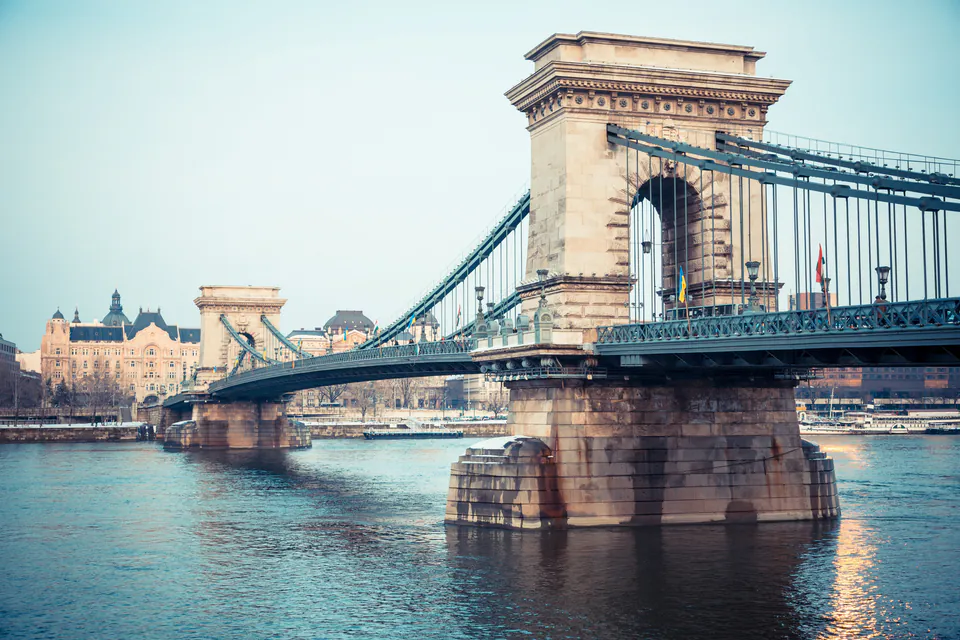
Buda Side Areas
Castle District (District I)
The Castle District is Budapest's fanciest historical area, sitting on top of Castle Hill like a crown looking over the Danube. Cobblestone streets wind between Gothic and Baroque buildings that house museums, galleries, and expensive restaurants. The Royal Palace takes up the southern end, and Fisherman's Bastion gives you fairy-tale views across the river.
This UNESCO World Heritage spot feels almost like a small village even though it's right in the center. Medieval street layouts create cozy spaces where every corner shows you amazing architecture. Being up high gives you natural air conditioning in summer, which makes it really nice for walking around for hours.
People who live in the Castle District have some of Budapest's most expensive homes. Diplomats and rich locals get to live close to major attractions but still have privacy. Small boutiques and artisan workshops are on the ground floors of historic buildings, so you can find unique things to buy.
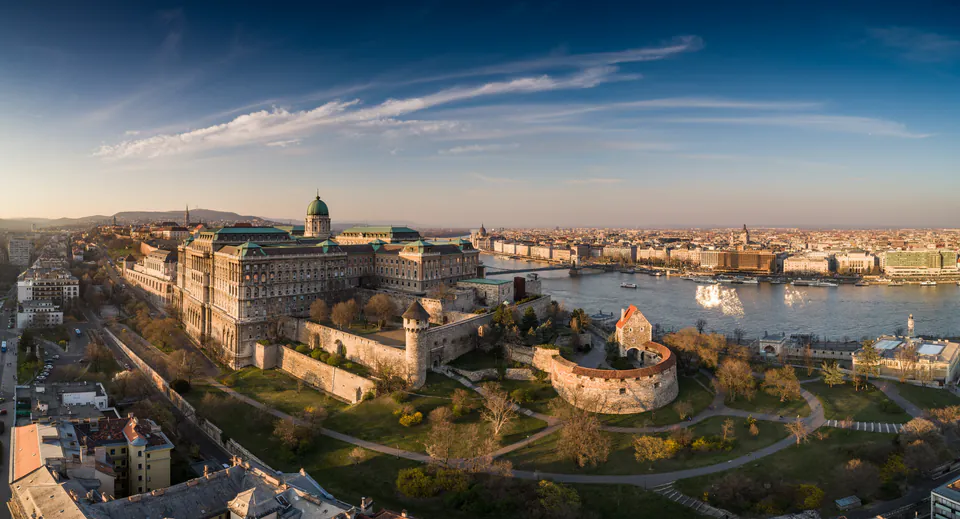
Víziváros (Watertown)
Squeezed between Castle Hill and the Danube, Víziváros gives you a more intimate Buda experience. This narrow strip used to be where craftsmen and merchants lived who worked for the royal court up above. Now it mixes residential quiet with easy access to both the river and Castle District attractions.
The main street, Fő utca, runs along the Danube and has charming cafés, small restaurants, and local shops. Side streets climb steeply up toward Castle Hill, which creates dramatic views and hidden courtyards. Being close to several thermal baths, including the historic Király Baths, makes this area even better for visitors who want real Budapest experiences.
We always recommend Víziváros for great value accommodation. You're close to major attractions without paying the crazy prices of the Castle District. The neighborhood feels like real residential life, so you can experience daily Hungarian living while still walking to tourist highlights.
Buda Hills
The residential Buda Hills go west from the city center and include several districts that let you escape from city intensity. These neighborhoods have villa-lined streets, big parks, and hiking trails with amazing city views. The hills house many of Budapest's richest residents, creating suburban peace within the capital.
Several attractions bring visitors to the hills, like the Széchenyi Hill lookout tower and the Children's Railway that local kids operate. The area's thermal springs feed numerous smaller baths that give you more intimate experiences than the famous city-center ones.
Public transportation reaches most hill neighborhoods, but some areas need walking on steep hills. We discovered that making the effort to reach these high areas rewards you with panoramic views you can't get from street level. They're especially stunning during sunset.
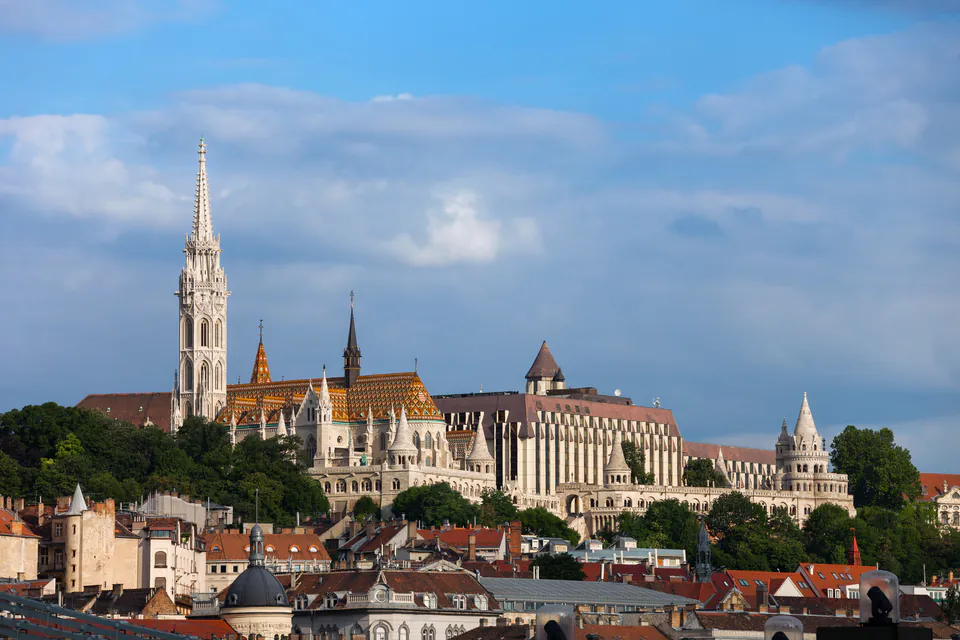
Pest Side Areas
Belváros-Lipótváros (District V)
District V is Budapest's business and government center, where grand 1800s architecture creates an imperial elegance feeling. The Hungarian Parliament Building is at the northern section, and Váci Street is the main pedestrian shopping area. This district balances tourist attractions with working business centers really well.
The sophisticated atmosphere attracts upscale hotels, fine dining places, and luxury shops. St. Stephen's Basilica works as both an architectural masterpiece and spiritual center, while the nearby financial district shows Budapest's modern economic strength.
Great public transportation connections make District V a perfect base for exploring the whole city. Having lots of services concentrated here, from banks to medical facilities, makes it convenient for longer stays. Evening hours turn the district into an elegant entertainment zone where locals and visitors hang out in sophisticated places.
Jewish Quarter (District VII)
The Jewish Quarter pulses with creative energy. It evolved from a historic religious center into Budapest's most vibrant cultural district. Ruin pubs take over abandoned buildings, creating unique nightlife experiences that get international attention. During the day, you can see synagogues, kosher restaurants, and cultural institutions that preserve important Jewish heritage.
Kazinczy Street is the quarter's main street, lined with trendy cafés, vintage shops, and art galleries. The contrast between historic synagogues and contemporary cultural venues creates a fascinating urban landscape where past and present exist together dynamically.
We've watched this neighborhood's transformation reflect broader changes in Budapest's cultural scene. Young professionals and artists have embraced the area's affordable rents and creative possibilities, resulting in a constantly changing landscape of new businesses and cultural initiatives.
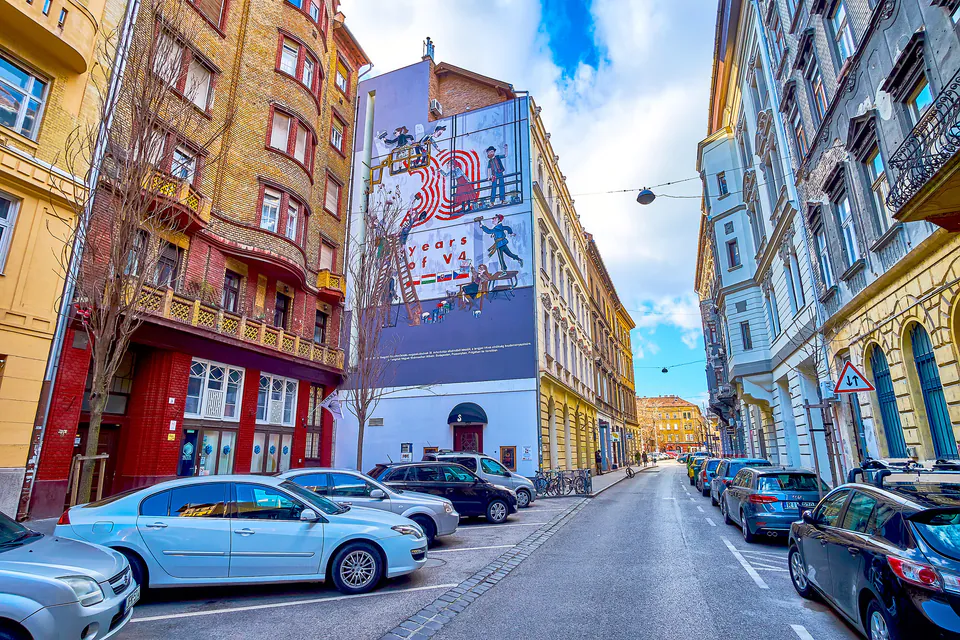
Terézváros (District VI)
District VI includes the elegant Andrássy Avenue, a UNESCO World Heritage boulevard that connects the city center with Heroes' Square. The Hungarian State Opera House is the district's cultural crown jewel, surrounded by sophisticated restaurants and luxury shopping opportunities.
The late 1800s architecture creates a unified look that reflects Budapest's golden age of development. Tree-lined streets make walking pleasant, and the M1 metro line (also UNESCO-protected) gives you convenient transportation along the avenue's length.
Terézváros attracts visitors who want cultural sophistication combined with urban convenience. The district's numerous theaters, concert halls, and galleries provide entertainment options for every taste, while upscale residential areas give you quiet retreats from tourist crowds.
Erzsébetváros and Beyond
Erzsébetváros (District VII) goes beyond the famous Jewish Quarter to include diverse neighborhoods with different personalities. The southern sections have traditional residential areas where local markets and family-run businesses create authentic Hungarian atmosphere.
The district's eastern areas show socialist-era architecture alongside newer developments, giving you insight into Budapest's 20th-century evolution. These neighborhoods have affordable accommodation options and genuine local experiences away from tourist concentrations.
Public transportation connections make it easy to get to central attractions while letting you experience residential Budapest. Local restaurants serve traditional Hungarian food at reasonable prices, creating opportunities for authentic cultural immersion.
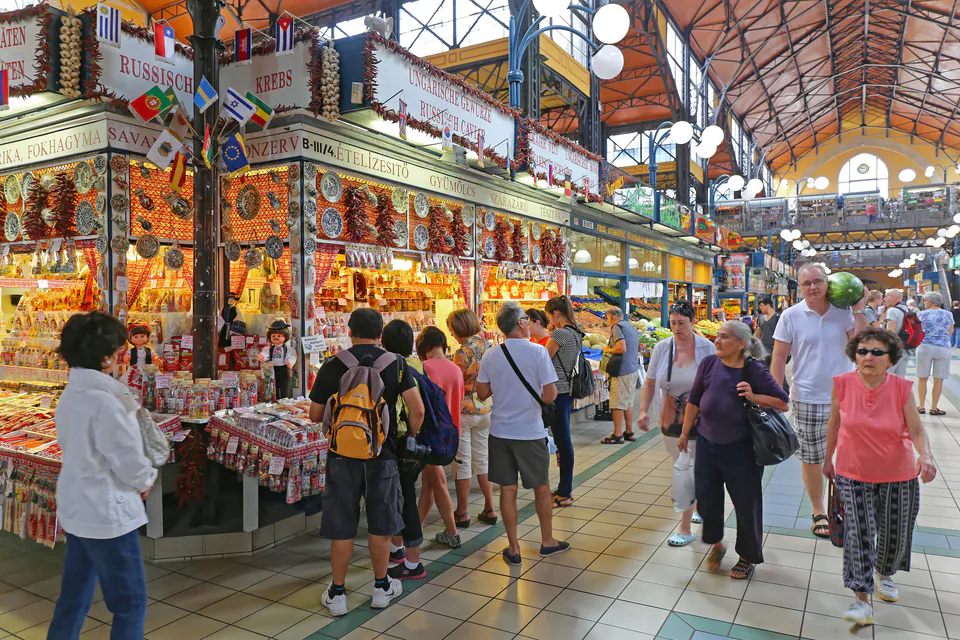
Getting Around Between Neighborhoods
Budapest's excellent public transportation system connects all neighborhoods efficiently, making it easy to explore multiple areas during one visit. The metro system gives you rapid transit between major districts, while trams have scenic routes along the Danube and through central areas.
Walking is still one of the best ways to experience neighborhood transitions, especially between areas next to each other. The Chain Bridge provides the most dramatic pedestrian crossing between Buda and Pest, giving you spectacular views while connecting the Castle District with the city center.
Understanding how neighborhoods relate to each other helps in planning efficient daily itineraries. Many attractions cluster within walking distance of each other, so you can focus on neighborhood exploration that reveals local character while minimizing transportation time.
Budapest Neighborhood Transportation Hub
| Neighborhood | Metro Station | Lines | Key Connections |
|---|---|---|---|
| Castle District | Batthyány tér | M2 (Red) | Bus 16, 16A, 116 to castle |
| Belváros-Lipótváros | Deák Ferenc tér | M1, M2, M3 | All metro lines intersect |
| Jewish Quarter | Astoria | M2 (Red) | Tram 47, 49 |
| Terézváros | Opera | M1 (Yellow) | Andrássy Avenue access |
| City Park Area | Hősök tere | M1 (Yellow) | Heroes' Square, Széchenyi Baths |
How Neighborhoods Change with Seasons
Budapest's neighborhoods show different personalities throughout the year. Seasonal changes dramatically affect their atmosphere and activities. Summer months bring outdoor dining to previously quiet streets, while winter creates intimate indoor scenes in thermal baths and cozy cafés.
Spring turns the Buda Hills into hiking destinations as trees bloom and temperatures get better. The Castle District becomes especially photogenic during this season, with flowering trees framing historic architecture. Pest-side neighborhoods benefit from longer daylight hours that extend outdoor café culture well into evening.
We always tell people that autumn provides perfect conditions for neighborhood walking tours, with comfortable temperatures and stunning foliage in park areas. The Jewish Quarter's indoor venues become especially appealing as cooler weather drives social life indoors, creating perfect conditions for experiencing the famous ruin pub culture.
Winter brings a magical quality to historic neighborhoods, especially when snow covers the Castle District's medieval streets. During our winter visit, we learned that thermal baths become essential neighborhood attractions during cold months, providing warm refuges and authentic Hungarian experiences.
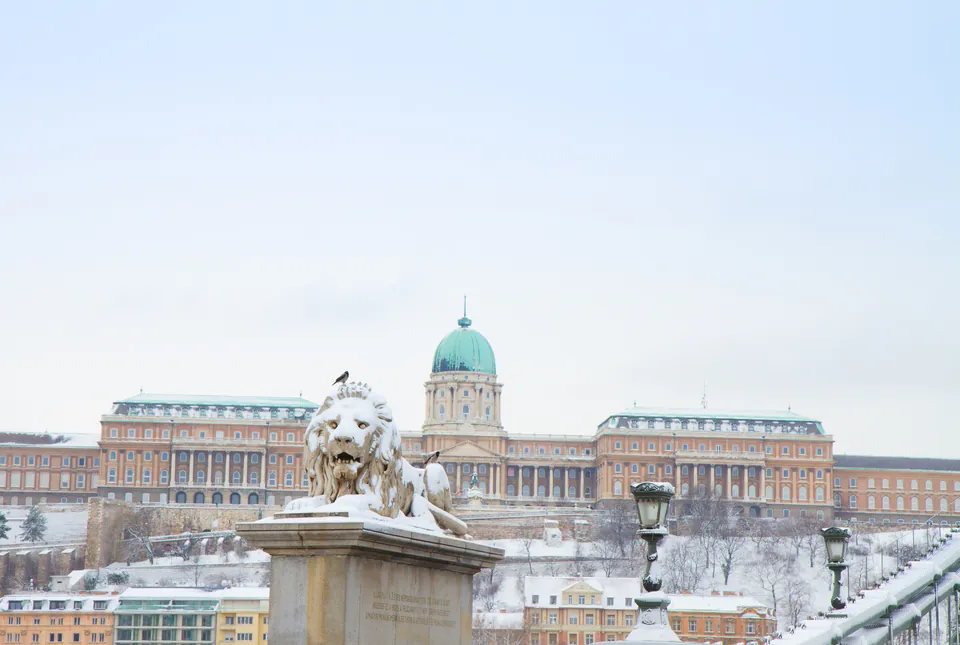
Local Life and Hidden Spots
Each neighborhood hides secrets that show themselves to patient explorers willing to go beyond obvious tourist routes. Small courtyards hide artisan workshops where traditional crafts continue centuries-old traditions. Neighborhood markets have authentic Hungarian products alongside opportunities for genuine cultural exchange.
Residential areas give you glimpses into contemporary Hungarian life, where local cafés work as community gathering places and small parks host informal social activities. These authentic experiences often prove more memorable than famous attractions, creating personal connections with the city's living culture.
We found that early morning hours give you the best opportunities for discovering neighborhood secrets, when locals go about daily routines and tourist crowds haven't arrived yet. Evening hours reveal different neighborhood personalities as residents come out for social activities and local entertainment venues come alive.